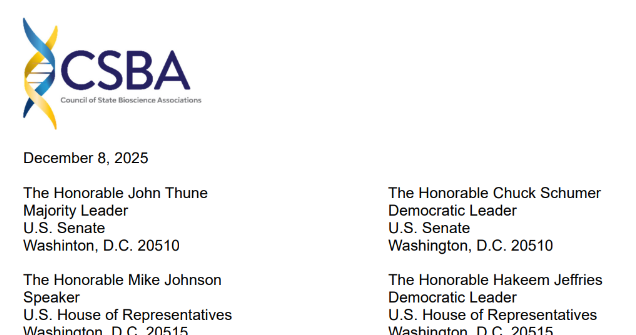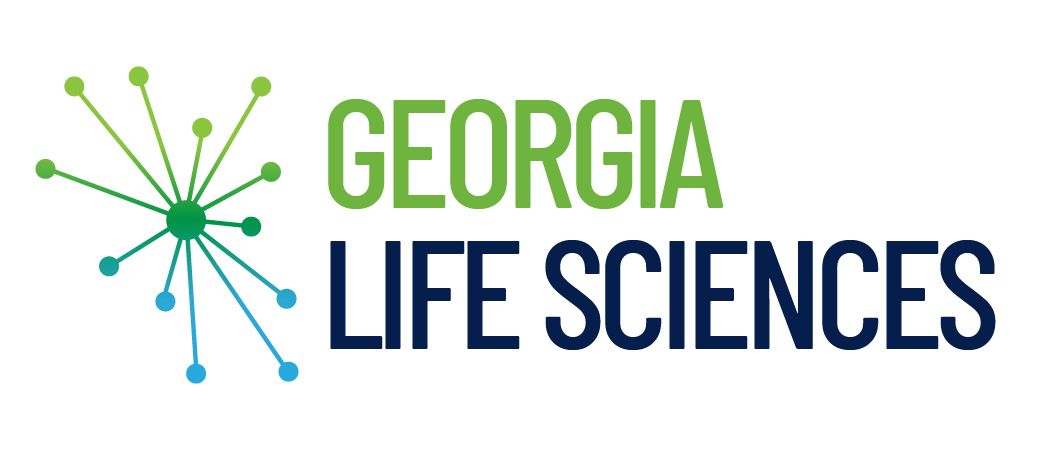Georgia Bio Innovation Summit Recap
Last week, Georgia Bio welcomed more than 600 attendees and 110 industry experts to the first-ever virtual Georgia Bio Innovation Summit—and the timing couldn’t have been better.
Starting the day after Election Day, we had three productive days of discussions about four critical challenges ahead: getting through the pandemic and economic crisis; tackling climate change; ending racial injustice; and standing up for science.
The key takeaway from the week: life sciences, including Georgia’s thriving biotechnology industry, will play a key role in finding solutions for all of them.
Here’s how.
1. Biotechnology is critical to building resilience.
COVID-19 has demonstrated the significant impact a pandemic can have on our health, our livelihoods, our food supply, and our economy, said Everett Hoekstra, President of Boehringer Ingelheim Animal Health USA Inc. , during the event kickoff.
This year has provided the life sciences industry with a clear vision of our collective purpose to serve mankind with lifesaving, lifechanging, and life enhancing health care, he continued.
“Now more than ever we’ve seen the importance of biotechnology in our everyday lives,” said U.S. Secretary of Agriculture (and Georgia native) Sonny Perdue .
With the national response to the pandemic and its impacts, we’ve seen “the critical role of innovation—specifically biological innovation—at play in mitigating supply chain risks and building resilience into our food and farming systems of the future,” continued Secretary Perdue.
So, how do we get there?
2. We need trust in science.
While science has been progressing faster than ever before, “we still struggle with how the public views what we do,” said Dr. Michelle McMurry-Heath, President and CEO of the Biotechnology Innovation Organization (BIO) , during the opening keynote.
“Political interference with science is not a one-party issue,” she said. “It is very tempting for politicians to think that it’s easy to tweak the science or push the science to meet their own political ends.”
This is why the scientific community must “stand up when we see a misuse or misappropriation of science,” and ensure we’re producing the highest-quality, well-tested science.
Biotechnology is “the industry that’s going to build the road for us to recover and grow. I just hope that our companies retain that focus, that I know they have,” she said, as well as “rebuild the pride in the work that we do.”
“How do we go back to having a society that trusts truth and trusts the data?” asked Dr. Seth Berkley, CEO of Gavi, The Vaccine Alliance , later in the week. “Everybody can have their own opinions, but they can’t have their own facts.”
“With that trust in science, I think we can do a lot of healing,” he said.
3. We need collaboration.
The global biotechnology industry has launched more than 800 research programs targeting COVID-19—including 11 vaccine candidates that have reached phase 3 clinical trials—in less than one year. How?
Speakers during a keynote on COVID-19 vaccines agreed: collaboration is key.
Dr. Paul Burton, Chief Global Medical Affairs Officer for Janssen Pharmaceuticals , said partnerships—with government, with health authorities, with industry, and between companies large and small—have been critical to this unprecedented response.
“We are in competition against the virus—we’re not in competition with each other,” he said.
Dr. Kathleen Toomey, Commissioner of the Georgia Department of Public Health, credited collaboration with the state and local response, as well—working together “across districts and counties” with hospitals, health care providers, community organizations, and the business community to “keep people healthy at the same time we can keep the economy open” and communicate more effectively.
“Even though, in many instances, we are competitors, when it comes to finding solutions for humanity, we can be a force,” added Patty Fritz, VP of U.S. Corporate Affairs for UCB, Inc.
4. We need diversity and inclusion.
Given COVID-19’s disproportionate impact on Black, African American, Hispanic, Latinx, and other communities of color, diversity and inclusion are key to overcoming the pandemic, as well—in particular, ensuring minority groups are represented in clinical trials.
“To be successful in vaccine development,” continued Janssen’s Burton, “we have to provide transparency and confidence for ethnic minorities in clinical trials and underrepresented groups.”
This strategy will help us well beyond the pandemic, said Dr. Alejandro Cané, VP, U.S. Medical and Scientific Affairs Lead at Pfizer Vaccines .
But we shouldn’t stop at diversity in clinical trials, said Dr. Clement Lewin, Associate Vice President, Head, BARDA Office and NV Stakeholder Engagement at Sanofi Pasteur . We must eliminate socioeconomic or racial disparities in terms of access and acceptance of the vaccine, as well.
All of this requires the industry itself to be diverse and inclusive, too. (It’s one of the reasons why Day 3 focused on D&I in the workforce and STEM education.)
“We need to make sure we’re putting particular emphasis on those communities, and, again, having people who represent those communities who are spokespeople,” explained Helene Gayle, MD, MPH, President & CEO of The Chicago Community Trust , because these populations have “perhaps the most to gain because of the high burden of disease.”
“We want to make sure that those populations are getting the information that they need, but it’s being done by institutions and individuals who are trusted, so we can build that trust,” she said.
“We are going to travel at the speed of trust. It’s not good enough to just have a vaccine if nobody wants to get vaccinated,” she added.
Did you miss something during the event?
It’s not too late to catch up!
Until November 30 th , you can login to the Georgia Bio Innovation Summit platform to access every session on-demand—including 6 keynotes and 20 breakout sessions!
(You can continue networking virtually with sponsors, exhibitors, and fellow attendees until November 30 th , too.)
Join the conversation on social media . Follow us on Twitter at @Georgia_Bio and #GaBioSummit.
The post Georgia Bio Innovation Summit Recap appeared first on Georgia Bio.





